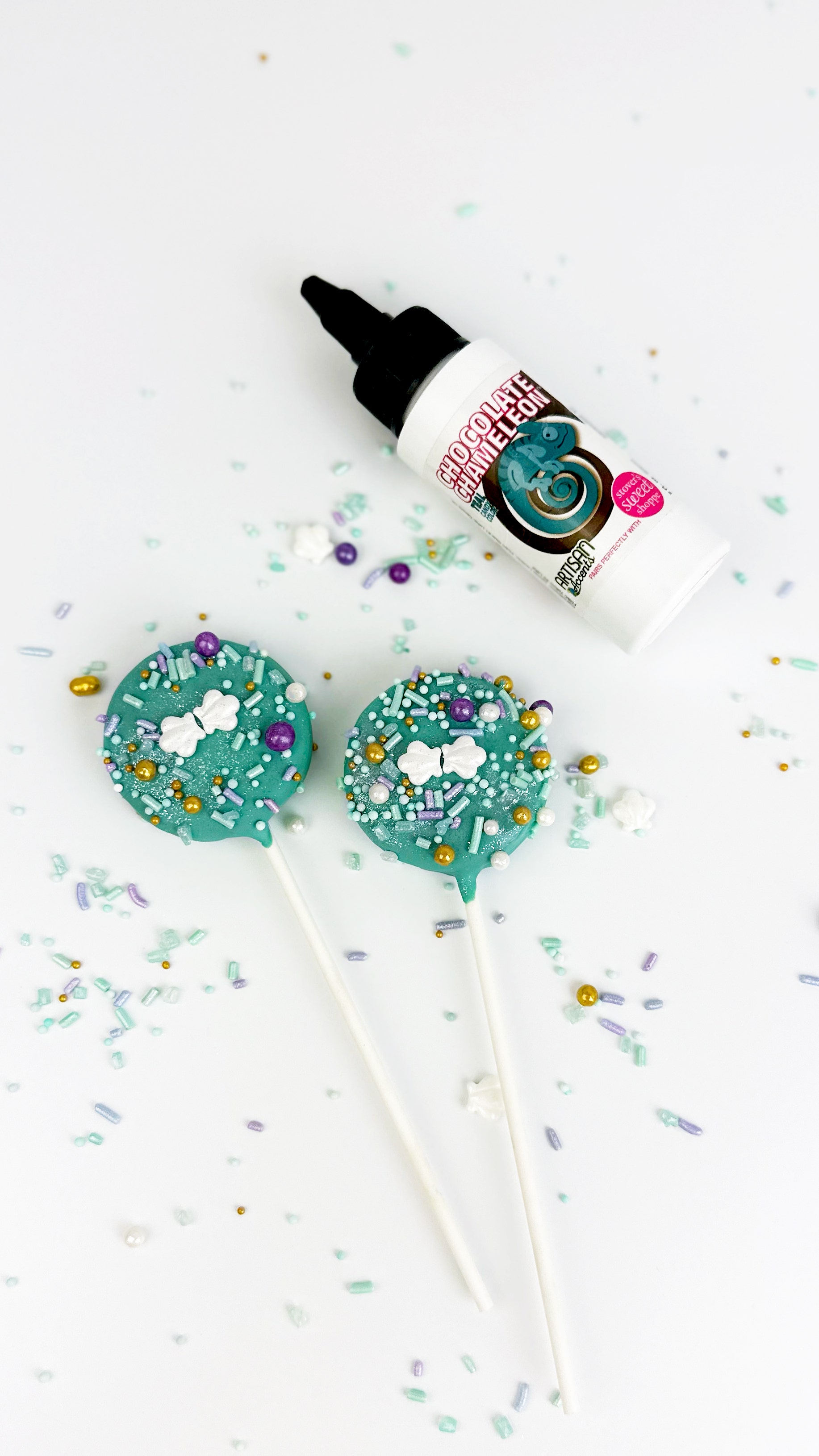Top Mistakes When Coloring Compound Coatings
- Jun 26, 2023
Coloring compound coatings can be a fun & creative way to add visual appeal to your sweet creations. Whether you're a professional baker or an avid home treat maker, working with compound coatings, such as our Sweet Shoppe line, allows you to experiment with different colors & designs for your homemade treats.
Achieving the desired colored chocolate results requires a certain level of knowledge & skill. Let’s explore the top mistakes that you’ll want to avoid when coloring compound coatings.
- DO NOT use Water-Based Food Coloring:
The most common mistake when coloring compound coatings is using a water-based food coloring. Compound coatings are typically made with fat-based ingredients so water-based, or gel-based, food colorings can disrupt the texture & consistency of the coating. Be sure to purchase an oil-based or powdered food coloring specifically formulated for use with compound coatings & chocolate. Oil-based coloring agents (sometimes called Candy Colors) blend seamlessly with the fats in the compound coating, resulting in a smooth & glossy finish.
Sweet Shoppe x Chocolate Chameleon Candy Colors & Colourmill are two of our favorite brands of oil-based candy colors! - Be Sure to Shake Coloring Well:
It is particularly important to shake your oil-based candy colors well before use. These types of coloring agents often contain separate layers of pigments & oil. The pigments often settle to the bottom of the bottle over time, while the oil rises to the top. By shaking the bottle vigorously, you effectively blend the two components, creating a homogeneous color mixture that will allow you to create the vivid chocolate & candy colors that you desire. - DO NOT Overheat Your Compound Coating:
Because compound coatings are made of sugar & oil, they are delicate & sensitive to heat. Overheating your compound coatings can cause them to become lumpy & thick, or even burn. It's essential that you melt the compound coating slowly & gently to distribute the heat evenly. Avoid overheating your chocolate compound by using a thermometer to monitor the temperature & never exceeding the recommended melting temperature specified by the manufacturer; we like to keep ours below 90ºF. By maintaining proper heat control, you'll preserve the quality & texture of your compound coating, resulting in better color absorption.
Check out this video or this blog post on how we recommend melting our Sweet Shoppe Compound Coatings! -
Always Test Colors:
Before applying the candy coloring to your compound chocolate, we always recommend that you test the color on a small sample of compound. This step is especially important when working with new or unfamiliar coloring or when trying to achieve a very specific color. Apply a small amount of the coloring to a small amount of compound chocolate. Once well blended, add a small drop of colored coating onto a piece of parchment paper or a spare cookie to let it set. This allows you to evaluate the color accuracy & make any necessary adjustments before you begin a large treat order. Keep in mind that some candy colors may deepen or change slightly as the compound coating sets, so it's better to err on the side of caution & start with a lighter shade since you can always add more. Pink & purple are the most susceptible to fade with sun & UV light, so keep this in mind when deciding how deep you want your colors to be.
* PRO TIP: Colourmill’s line of candy coloring is made with a UV protectant formula to help your colors last longer!
By avoiding these mistakes you'll be well on your way to achieving vibrant, colorful, professional-looking sweets with an enhanced presentation.
So, grab some oil based candy colors & unleash your inner artist!
We have very knowledgeable culinary staff at Stover & Company. If you ever have any questions about coloring compound coatings, chocolate or any other product support inquiries, don’t hesitate to contact us at info@stovercompany.com.



